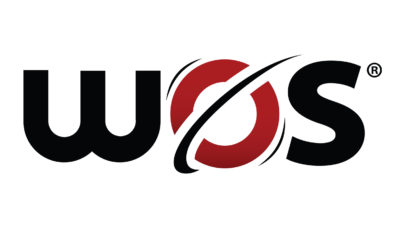
Object Storage a ‘Total Cop Out,’ Hammerspace CEO Says. ‘You All Got Duped’
November 2, 2023
The mass adoption of object storage systems like Amazon S3 may appear to be a top achievement of the big data era, since we got essentially unlimited storage ac Read more…

Object and File Storage Have Merged, But Product Differences Remain, Gartner Says
November 1, 2022
Companies that were looking to store tens of petabytes of unstructured data previously had two main flavors of storage they could turn to: object storage and di Read more…

Pawsey Turns to Dell, Xenon for 130PB of Storage
August 18, 2021
Big things are in store for the Pawsey Supercomputing Centre in Perth, Western Australia – and soon, big things will be in storage. The center, which is geari Read more…

Caringo Acquired by Datacore Software
January 27, 2021
Fueled by enterprise deployments of hyperconverged infrastructure, the software-defined storage market is booming. That trend has prompted DataCore Software to Read more…

Latest DDN Launch Fills out its WOS Object Storage Line
September 13, 2016
DataDirect Networks (DDN) today introduced a third member to its WOS object storage product line, the WOS 8460, aimed at active archive and collaboration use cases. Object storage, once mainly restricted to ‘cold’ archives for large quantities of unstructured data – think content delivery networks (CDN) used in conjunction with the web – has been slowly expanding its footprint into other application areas. The new DDN product fills out the company’s object storage portfolio and is positioned between DDN’s WOS 9660 offering, intended more for traditional ‘cold’ archives, and WOS 7000, which is well suited for embedded applications such as use with S3. Read more…

DDN Aims for Deeper, Cheaper Archives
March 7, 2014
When it comes to archiving of important research or mission-critical data, organizations are left with making tough decisions around investing in expensive tier Read more…

Data Protection: One Size Does Not Fit All
April 10, 2013
In object storage applications, cluster sizes run the gamut from just a few nodes built into a medical imaging modality to thousands of nodes spanning multiple datacenters. Fulfilling the economic and manageability promises of a unified storage approach means using the best protection scheme for each particular use case. The proposed solution leverages both replication and erasure coding to ensure scalability, while optimizing footprint efficiency. Read more…

- Click Here for More Headlines

Whitepaper
Transforming Industrial and Automotive Manufacturing
In this era, expansion in digital infrastructure capacity is inevitable. Parallel to this, climate change consciousness is also rising, making sustainability a mandatory part of the organization’s functioning. As computing workloads such as AI and HPC continue to surge, so does the energy consumption, posing environmental woes. IT departments within organizations have a crucial role in combating this challenge. They can significantly drive sustainable practices by influencing newer technologies and process adoption that aid in mitigating the effects of climate change.
While buying more sustainable IT solutions is an option, partnering with IT solutions providers, such and Lenovo and Intel, who are committed to sustainability and aiding customers in executing sustainability strategies is likely to be more impactful.
Learn how Lenovo and Intel, through their partnership, are strongly positioned to address this need with their innovations driving energy efficiency and environmental stewardship.
Download Now
Sponsored by Lenovo
Whitepaper
How Direct Liquid Cooling Improves Data Center Energy Efficiency
Data centers are experiencing increasing power consumption, space constraints and cooling demands due to the unprecedented computing power required by today’s chips and servers. HVAC cooling systems consume approximately 40% of a data center’s electricity. These systems traditionally use air conditioning, air handling and fans to cool the data center facility and IT equipment, ultimately resulting in high energy consumption and high carbon emissions. Data centers are moving to direct liquid cooled (DLC) systems to improve cooling efficiency thus lowering their PUE, operating expenses (OPEX) and carbon footprint.
This paper describes how CoolIT Systems (CoolIT) meets the need for improved energy efficiency in data centers and includes case studies that show how CoolIT’s DLC solutions improve energy efficiency, increase rack density, lower OPEX, and enable sustainability programs. CoolIT is the global market and innovation leader in scalable DLC solutions for the world’s most demanding computing environments. CoolIT’s end-to-end solutions meet the rising demand in cooling and the rising demand for energy efficiency.
Download Now
Sponsored by CoolIT
Advanced Scale Career Development & Workforce Enhancement Center
Featured Advanced Scale Jobs:
HPCwire Resource Library
HPCwire Product Showcase
© 2024 HPCwire. All Rights Reserved. A Tabor Communications Publication
HPCwire is a registered trademark of Tabor Communications, Inc. Use of this site is governed by our Terms of Use and Privacy Policy.
Reproduction in whole or in part in any form or medium without express written permission of Tabor Communications, Inc. is prohibited.
























